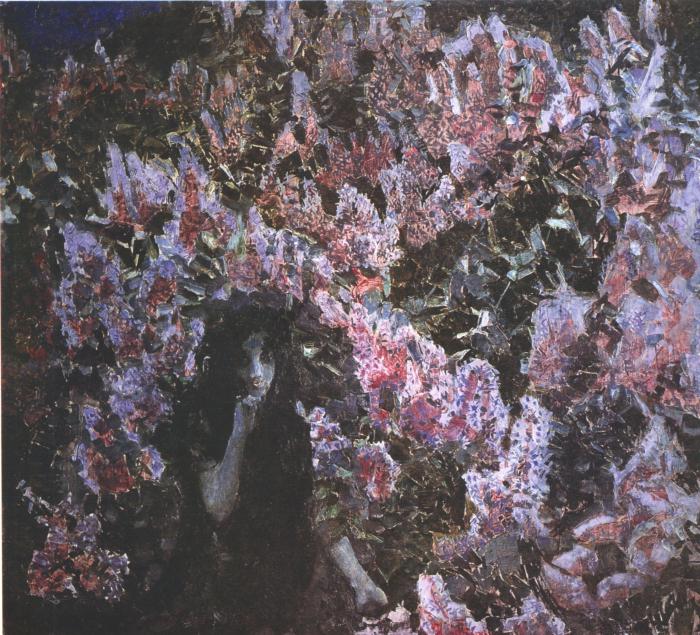Mikhail Aleksandrovich Vrubel is one of thethe most extraordinary and favorite Russian artists. Created by him landscapes and images reveal a magnificent world that is as if on the border between everyday life and magic. Best of all, this ephemeral reality is revealed by "Lilac" - one of the fabulous "nocturnes" of Vrubel, which the public likes so much.
Fairy World of Vrubel
Mikhail Vrubel was incredibly versatileartistic gift, as evidenced by temple paintings, decorative panels, stained-glass windows, sculptures, easel paintings and graphic drawings. Devotion to the vocation and concentration on the work allowed Vrubel to create many magnificent works, but his favorite series is the fabulous "nocturnes" - a number of paintings depicting magical characters against the background of nocturnal or twilight landscapes.

The unique talent of Vrubel was the originalvision of mythological and fairy-tale characters and plots. Satires and dryads, goddesses and mermaids, a demon and captive princess - all of them in the artist's paintings are not what they look like in public opinion and the usual descriptions. In addition to that Vrubel bestowed on the "Russian spirit" almost everything that touched his brush, the artist's imagination was incredibly rich and self-sufficient, and therefore did not need clues and prejudices.
Mikhail Vrubel, Lilac: description of the painting
One of the most delicate and gentle "nocturnes",which Vrubel ever wrote - "Lilac" - creates a small corner in which the real mingles with the fabulous. Because of the sprawling lilac bush at the very moment when twilight turns into night, like a tender scared girl emerges. Long hair completely hides its shape and outfit, and the skin reflects the moonlight, creating a magical image of a mermaid or forest fairy.
Vrubel lilac wrote palette knife (and foliage, andinflorescence), and the female figure - with a brush, thanks to which the painting creates a volumetric texture of flowers and leaves, which contrasts with the smooth and soft form of the girl. Against the backdrop of the bright, as if alive flowers, the young lady, covered by a cascade of long black hair, merges with the shadow and looks out from under the cover of the night, trying to make out something.

M. Vrubel, "Lilac": analysis of the painting
Many art critics associate Lilac with anothera picture of Vrubel from a series of "nocturnes" - "Pan." In the long-haired beauty they guess the nymph, into which Satyr was in love. This assumption is confirmed by the words of Vrubel himself, who said that "Lilac" is an alliteration of the name of the very nymph, who was called Siringa.
Just like Pan, the nymph Vrubel is more Russian,than the Greek. There is not in it the ease and serenity inherent in the classic mythical dryads and naiads. Woven from the twilight light and hidden in the thick inflorescence of the Syringe is more like a doze, a mermaid or another representative of Navi; like Vrubel's Pan - more Russian lish than the Greek Satyr.
Variants of "Lilacs"
At the mention of Vrubel's painting "Lilacs" almostalways the first to mind comes canvas, written in 1900 and described above, but this is not the only picture of the artist, which depicts lush purple inflorescences. There are two more works by Mikhail Vrubel with the same name, one of which the author was not able to finish.

At the very beginning of the XX century, the artist decided to showto the world his vision of Tatyana Larina from Pushkin's poem "Eugene Onegin". Vrubel planned to portray a girl sitting on a bench near a lush bush of lilacs. In 1900 the sketch for the painting, also called "Lilac", was completed.
In 1901 Vrubel began work on a largea picture, in the plot of which again was a girl hidden in the shade of a blossoming lilac bush. Unfortunately, the artist did not have time to finish work on the canvas, and the audience did not see what Tatyana Larina was in the view of the great painter. However, the favorite model of Vrubel, his muse and wife, Nadezhda Zabela-Vrubel, can be guessed in a figure, a bearing and an obscure portrait sketch.












